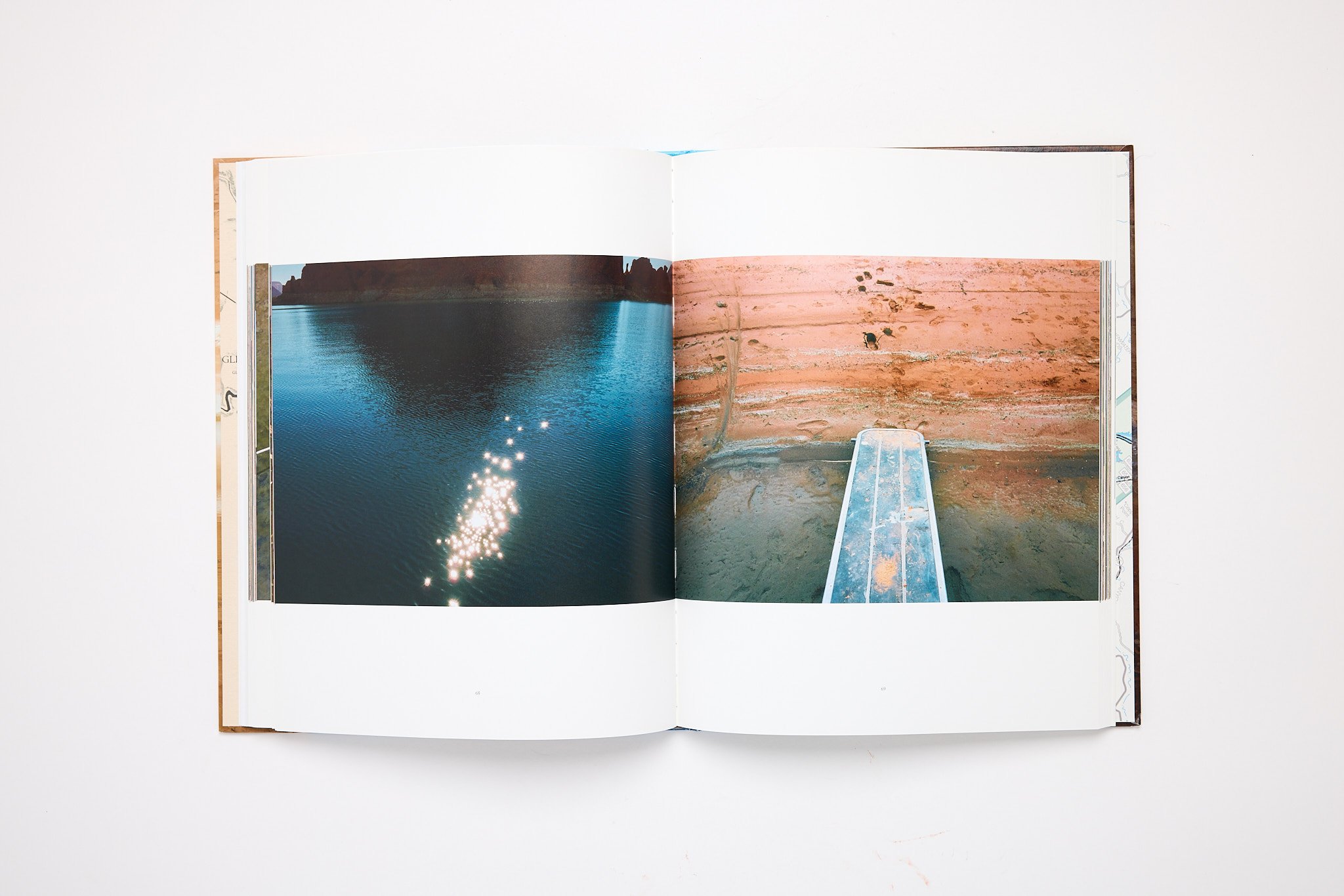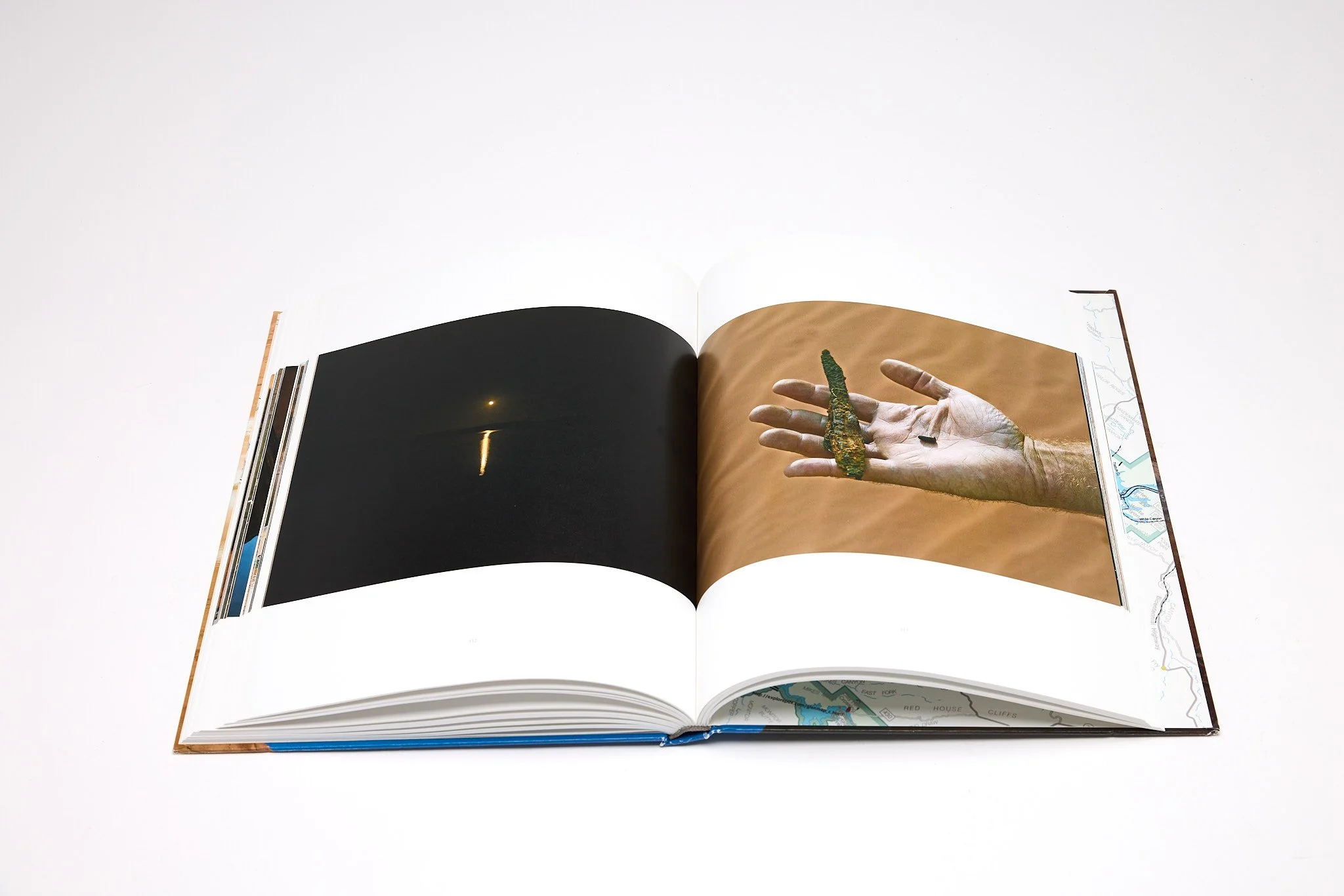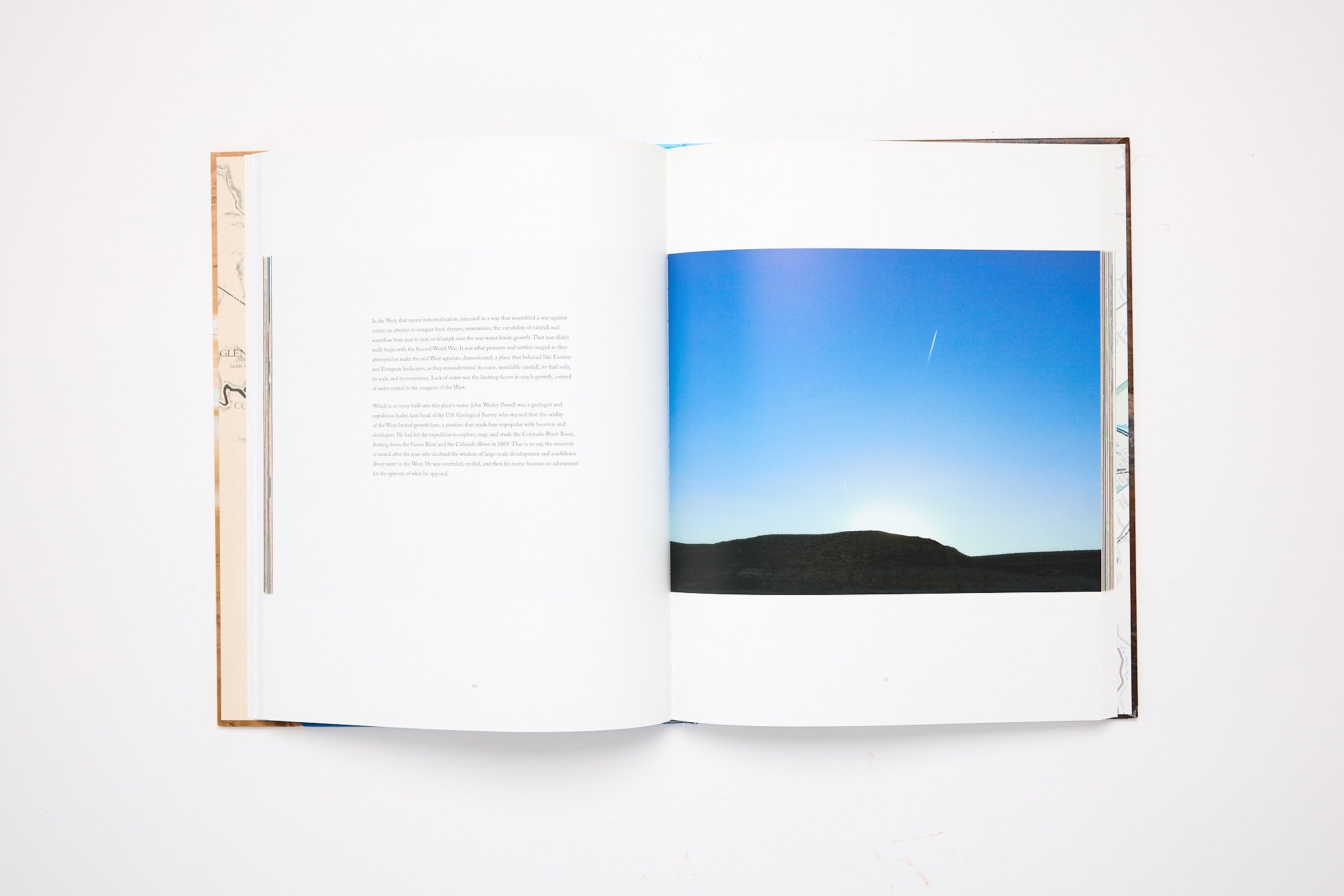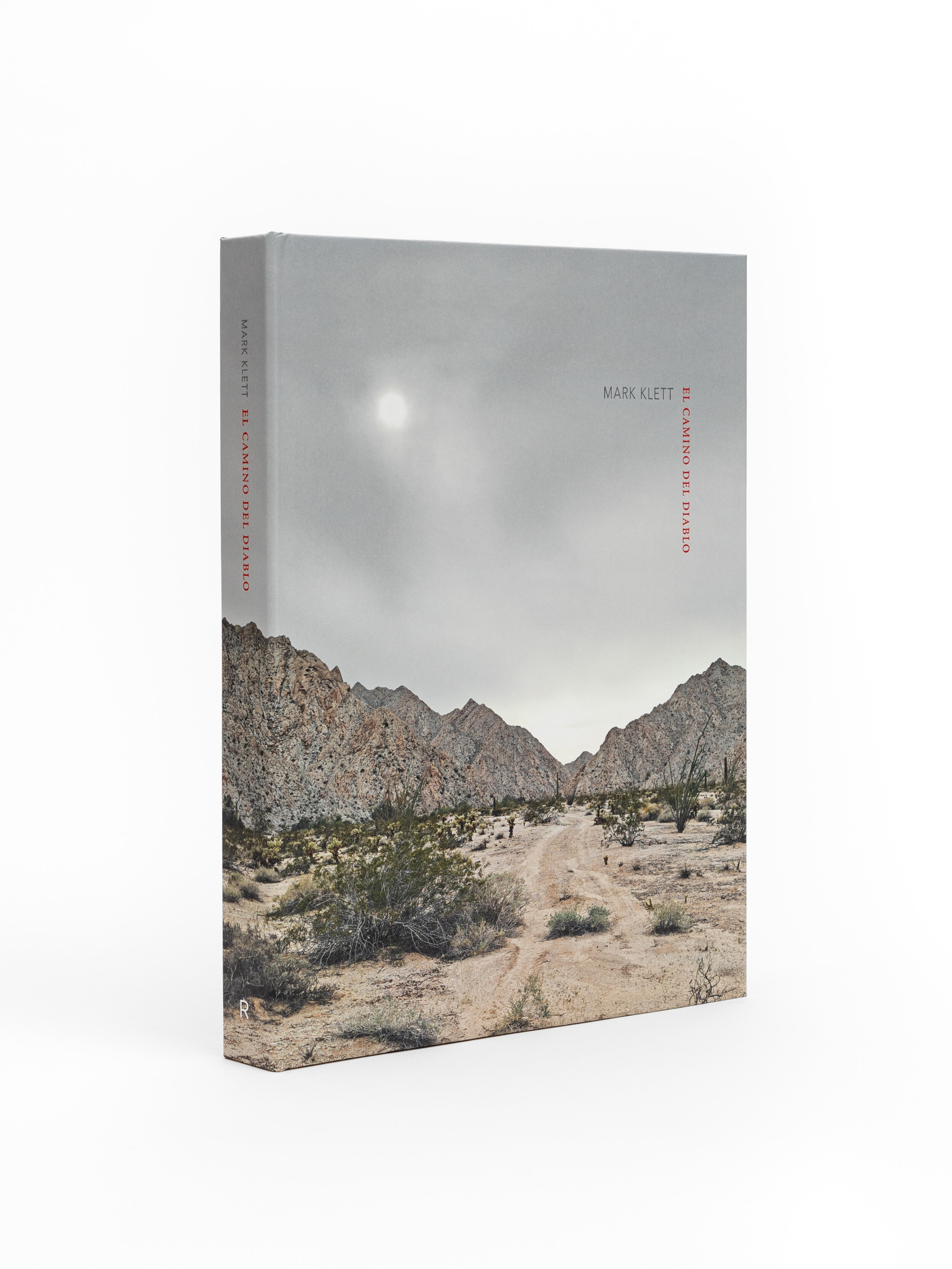 Image 1 of 10
Image 1 of 10

 Image 2 of 10
Image 2 of 10

 Image 3 of 10
Image 3 of 10

 Image 4 of 10
Image 4 of 10

 Image 5 of 10
Image 5 of 10

 Image 6 of 10
Image 6 of 10

 Image 7 of 10
Image 7 of 10

 Image 8 of 10
Image 8 of 10

 Image 9 of 10
Image 9 of 10

 Image 10 of 10
Image 10 of 10

Drowned River: The Death and Rebirth of Glen Canyon on the Colorado
…the madness of the past and the terror of the future, amid the epiphanies of beautiful light and majestic space and the contradiction of the present.
— Rebecca Solnit
In 1963 the waters began rising behind Glen Canyon Dam and 170 miles of the Colorado River slowly disappeared as the riverbed and surrounding canyons filled with water. Those who supported and those who opposed the dam considered it a long-term transformation; environmentalists mourned Glen Canyon as dead and gone forever. But it’s coming back, in a victory that is also the pervasive disaster of climate change.
Byron Wolfe, Mark Klett, and Rebecca Solnit spent half a decade exploring Glen Canyon as expectations and possibilities changed and the river reemerged at the upper end of the reservoir. Their starting point was Eliot Porter’s landmark book of color photography, The Place No One Knew: Glen Canyon the Colorado, published by the Sierra Club in 1963 as a political statement about what had been lost under the dam’s waters and why it should never happen again. Their ending point is the reemergence of the river and the rise of questions about climate, the fate of the southwest, the folly of human endeavors to control nature, and the possibility of seeing these places and problems in new ways.
Drowned River is a book about climate change, but also about how photography can describe beauty and trouble simultaneously, about depth and shallowness, about what it takes to understand a place and to come to terms with the enormous scale of the changes we have set in motion.
-
Photography by Mark Klett & Byron Wolfe
Introduction by Michael Brune
Text by Rebecca SolnitHardcover
11.25 x 13 inches
212 pages / 80 imagesTrade ISBN: 9781942185253
Signed ISBN: 9781955161824 -
Mark Klett is a photographer interested in the intersection of places, history and time. His background includes working as a geologist before turning to photography. Klett has received fellowships from the Guggenheim Foundation, the Pollock-Krasner Foundation, the National Endowment for the Arts, and the Japan/US Friendship Commission. His work has been exhibited and published in the United States and internationally, and is held in over eighty museum collections worldwide. He is the author/co-author of nineteen books including Seeing Time, Forty Years of Photographs (University of Texas Press 2020). Klett is Regents’ Professor Emeritus at Arizona State University.
For over twenty years, Byron Wolfe has held a deep and abiding interest in ideas about place, history, time, perception, representation, and personal experience. In the broadest terms his work is a combination of scholarly and historic research, creative expression, and personal narrative. His creative practice is grounded in photography and digital imaging, but he increasingly works in other media. Wolfe is a Professor and the Program Director of Photography at the Tyler School of Art at Temple University in Philadelphia. He has participated in numerous exhibitions and his work is held in several public collections, including the San Francisco Museum of Modern Art, The Museum of Fine Arts in Houston, The Center for Creative Photography in Tucson, and the Nelson-Atkins Museum in Kansas City. Wolfe has published six books, including Phantom Skies (Radius Books). He is a recipient of the Santa Fe Prize for Photography and a John Simon Guggenheim Fellowship. A former resident of the West, he now lives in Villanova, PA.
…the madness of the past and the terror of the future, amid the epiphanies of beautiful light and majestic space and the contradiction of the present.
— Rebecca Solnit
In 1963 the waters began rising behind Glen Canyon Dam and 170 miles of the Colorado River slowly disappeared as the riverbed and surrounding canyons filled with water. Those who supported and those who opposed the dam considered it a long-term transformation; environmentalists mourned Glen Canyon as dead and gone forever. But it’s coming back, in a victory that is also the pervasive disaster of climate change.
Byron Wolfe, Mark Klett, and Rebecca Solnit spent half a decade exploring Glen Canyon as expectations and possibilities changed and the river reemerged at the upper end of the reservoir. Their starting point was Eliot Porter’s landmark book of color photography, The Place No One Knew: Glen Canyon the Colorado, published by the Sierra Club in 1963 as a political statement about what had been lost under the dam’s waters and why it should never happen again. Their ending point is the reemergence of the river and the rise of questions about climate, the fate of the southwest, the folly of human endeavors to control nature, and the possibility of seeing these places and problems in new ways.
Drowned River is a book about climate change, but also about how photography can describe beauty and trouble simultaneously, about depth and shallowness, about what it takes to understand a place and to come to terms with the enormous scale of the changes we have set in motion.
…the madness of the past and the terror of the future, amid the epiphanies of beautiful light and majestic space and the contradiction of the present.
— Rebecca Solnit
In 1963 the waters began rising behind Glen Canyon Dam and 170 miles of the Colorado River slowly disappeared as the riverbed and surrounding canyons filled with water. Those who supported and those who opposed the dam considered it a long-term transformation; environmentalists mourned Glen Canyon as dead and gone forever. But it’s coming back, in a victory that is also the pervasive disaster of climate change.
Byron Wolfe, Mark Klett, and Rebecca Solnit spent half a decade exploring Glen Canyon as expectations and possibilities changed and the river reemerged at the upper end of the reservoir. Their starting point was Eliot Porter’s landmark book of color photography, The Place No One Knew: Glen Canyon the Colorado, published by the Sierra Club in 1963 as a political statement about what had been lost under the dam’s waters and why it should never happen again. Their ending point is the reemergence of the river and the rise of questions about climate, the fate of the southwest, the folly of human endeavors to control nature, and the possibility of seeing these places and problems in new ways.
Drowned River is a book about climate change, but also about how photography can describe beauty and trouble simultaneously, about depth and shallowness, about what it takes to understand a place and to come to terms with the enormous scale of the changes we have set in motion.
YOU MAY ALSO LIKE




